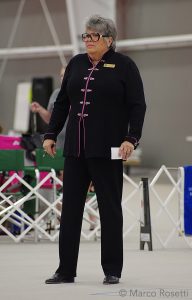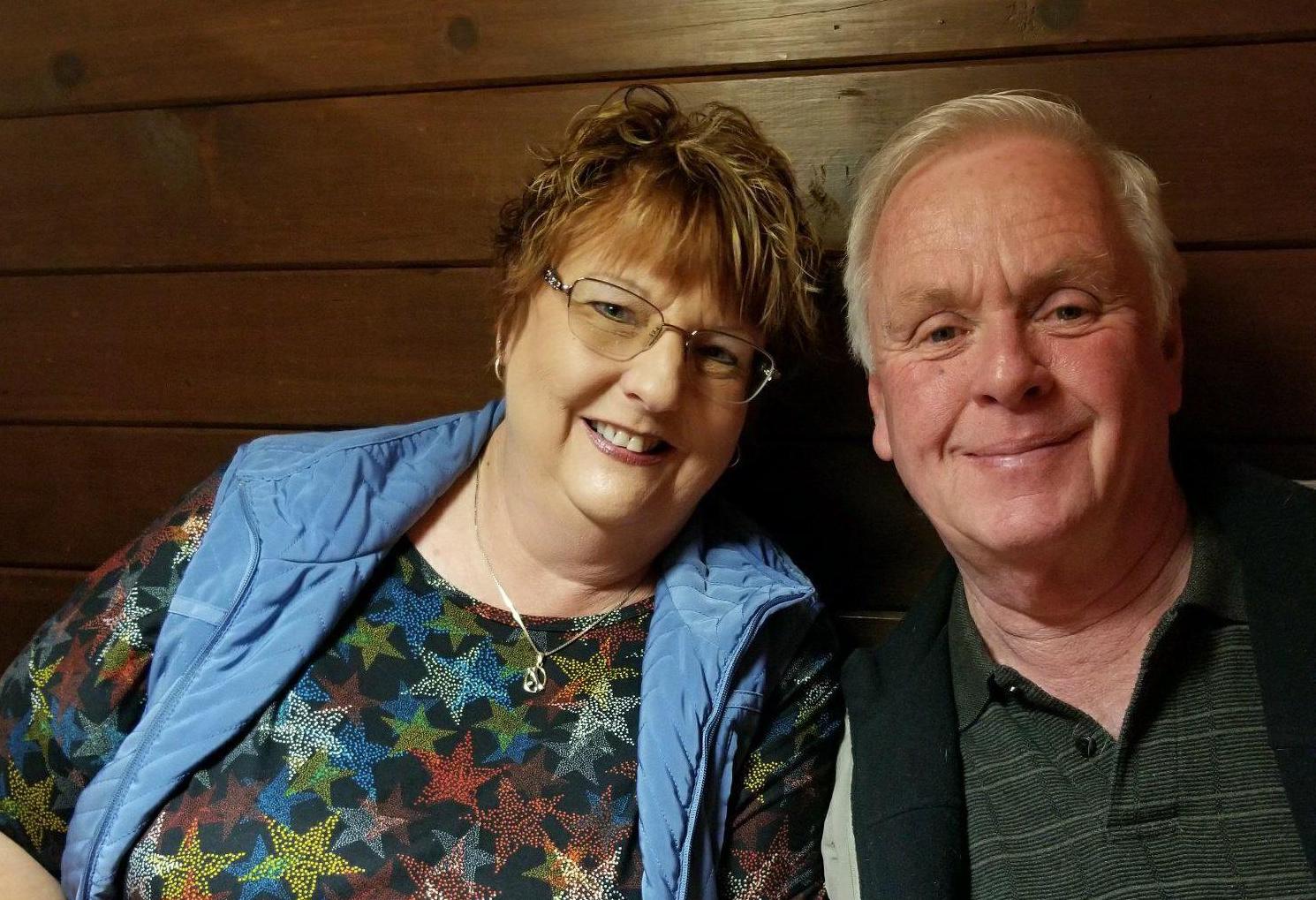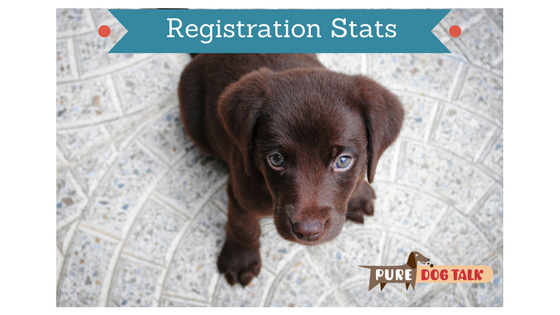496 — Owner Handlers: Make a Plan, Manage Expectations
Owner Handlers: Make a Plan, Manage Expectations
Amanda Kelly of Fwaggle Toy Manchester Terriers joins host Laura Reeves for some final thoughts on Owner Handlers and how they can earn the advantage in the ring.
Have Fun
“There is nothing more eye catching than looking in the ring and seeing a dog that is having a good time and a handler having a good time. Maybe the dog isn’t standing perfectly. Maybe it’s got one foot out in the wrong place or whatever. I guarantee you that if that dog is having a good time it has better posture, he has better expression, it’s holding its shape and its outline regardless of whether every foot is where it needs to be it is a more attractive dog to look at then the perfect statue at the end of the line.
Take a Video
“It is so imperative that you see yourself, because showing dogs is just about making pictures. That’s all that we do when we go in the ring. We make a picture on this mat and then we make a hopefully nice picture as we move around the ring and then we get on the table and we make another picture and then we do the down back we make another picture. And in all those photos the handler’s job is to frame the artwork that is the dog but you don’t know what that picture looks like if no one’s ever shown you.
Make the Picture
“I think that one of the best ways of figuring out what picture you want to make in the ring is to choose handlers who present dogs in a way that you appreciate. You can do that really easily. Start with Westminster videos or maybe your national video. Watch it. Pick out someone who you think is the whole package and then look at what they’re doing, what are the little detailed pieces that make the difference in your mind.
Make it Muscle Memory
“The entirety of learning how to handle (is to move) from worrying about one thing to worrying about the next thing, because you’ve mastered the other thing that you used to worry about. Now you don’t think about it anymore. I can tell you I’ve shown my breed 35 years. I still have a thought process when I’m in there, but I’m not thinking about my lead. I’m thinking about things like when is the judge watching the dogs in the lineup and how do I stand so that I have the right angle, showing the profile that I want to show or how do I get this dog to stop shivering because it’s so cold.
YOU Can Do It
“Every single day at every show across America, across the world, people like me, people like you, people like those who are listening, are successful. You just have to make a plan. Learn manage your expectations so that you’re picking goals that work and are realistic. I would encourage you to go one step further and make sure that the goals that you set for yourself are achievable goals that have nothing to do with who the judge points to. If your only measure of success is whether or not you won a point or whatever, you’re doomed. You are doomed. If your measure of success is ‘I want to go in that ring and I want my dog to do X or I want to remember to hold my elbow in against my body and not have it flail around, whatever it may be. It needs to be something that’s within your control. I guarantee you that if you go at it with that attitude and you adjust your idea of winning and losing, you will have more fun. And if you have more fun you will win more.
495 — Amanda On… Owner Handlers, Winning, Losing and Fun
297 – Standards: Reading, Interpreting and Understanding the Blueprint
Standards: Reading, Interpreting and Understanding the Blueprint
 Nannette Newbury, judges education coordinator for United States Australian Shepherd Association, breaks down breed standards.
Nannette Newbury, judges education coordinator for United States Australian Shepherd Association, breaks down breed standards.
Newbury’s presentation will help you understand: What are the parts of the standard, what’s a good and bad breed standard, what’s open to interpretation and what isn’t.
Breeders use the standard one way, judges have to use it another way, Newbury noted.
“That judge had to weigh a lot more than soundness,” Newbury said. “What good is it if a dog looks like a coyote and it’s sound. Judges can only go by what’s in the breed standard.”
How to apply the breed standard
Understanding the essence of the breed has to be a priority for judge or breeder, Newbury observed.
When dog shows began, folks had to come up with a way to compare and contrast dogs. The breed standard has to distinguish one breed from another.
“Our breeds came first and then we wrote standards,” Newbury said. “In order to read, interpret and apply a breed standard, you have to have a knowledge of canine anatomy, physiology, structure. It takes time to learn.”
Flaws, faults, implied faults
The breed standard is not a list of negative aspects, Newbury opined, rather it describes ideal.
Hallmarks of a breed are what make it distinct from all others and should be part of a good breed standard.
“If all dogs were perfect, judging would be easy. In the real world, deciding which quality or fault is more or less important and awarding accordingly is the quintessential job of the judge,” Newbury said. “As breeders, you pick your poison. Markings or fronts or whatever, you pick your poison. Judges do the same thing.”
Anything that deviates from the standard is a fault, Newbury noted, while the degree of deviation determines the severity of the fault.
“Go through (your breed) standard and list virtues and ideals. If the virtue affects the original function of the dog, consider those more important,” Newbury said.
“Anybody can find a fault. The hardest thing to do when evaluating a dog is to look at a dog, even one that is of poor quality, and find something good to say about it. It is a gift to be able to find the virtues in a dog.”
There’s always more to learn! Check out the archive!
189 – Ins and Outs of RV Parking at Dog Events
RV Parking Crews Not “Parking Nazis”
Bert and Bruce Rettick, dog show RV parking mavens in Northern California, share their knowledge and advice about safe parking of rigs at events.
“We take the responsibility off of club members,” Bert said. “If you take two or three club members and put them out in an RV parking lot, it’s taking away from doing other things. Club membership is diminishing. There’s just not the bodies to do the work.”
The couple have been dog show exhibitors for more than 30 years. Bruce started helping out parking crews while Bert was showing their Boxers and Boston Terriers. Eventually, clubs began asking him to take on the responsibilities of managing parking.
In their years of working this particular niche of the dog show world, the Retticks have developed important checklist items.
Safety First
“This is a village out here,” Bert said. “We look out for one another. Safety. RVs all placed in the same direction if you have to evacuate. Aisles wide enough for a fire truck or ambulance to get in. Generators are in the same direction. Exhaust pipes are required on generators. Driving cars in and out of the RV parking lot during show hours is a safety issue. Parking two rigs awning to awning can leave water heaters butted against each other on the other sides, which can cause explosions from propane. We need to be proactive not reactive.”
Parking Location Doesn’t Determine Results
Bert noted that while she hears complaints about favoritism in parking, business is business.
“You are just as important with your one dog as people are with 20 dogs,” Bert said. “But from a business decision, 20 dogs three spaces closer makes their job easier also. My bottom line, you can win a BIS no matter where you’re parked. The judge doesn’t ask if you’re in 1A or the day of show lot before pointing.”
Kennel clubs, according to AKC rules, do not have to offer RV parking, Bert said. It’s up to each club. Handicapped parking doesn’t necessarily mean close to ring, she added. “We try to make sure they have a flat surface to get to the ring. Handicapped parking means we will accommodate exhibitors to get to the ring as safely as possible.”
“We do the best we can with what we have to work with. I hope people take time to think about the bigger picture,” Bruce said. “Without the exhibitors, the dog show doesn’t happen. You gotta be kind to your people.”
Just Be Nice!
On the other hand, a little niceness to the parking people goes a long way.
“We can control a lot of things, but Mother Nature is not one of them. A little more patience, a little more understanding. There are reasons, sometimes, that exhibitors may not be aware of that can hold up parking,” Bruce said.
Tip of the Week
Remember to listen to the end for Allison Foley’s Tip of the Week from Leading Edge Dog Show Academy! Allison is talking about SPACE and how to use it wisely in the show ring.
166 – Mark Dunn: AKC Registration Trend Reversal
AKC REGISTRATION REVERSES 20 YEAR TREND
According to Mark Dunn, AKC Senior Vice President of Registration and Customer Development, more breeders are registering more dogs, reversing a 20-year downtrend.
MARK DUNN BREAKS DOWN THE REGISTRATION STATISTICS
The last four years have shown notable increases in the number of dogs registered. Mark Dunn tells us that the number of litters registered and the number of people breeding dogs are also on the rise.
“…it says something about the role that AKC Breeders are playing in getting dogs into American homes. Which is really important to all of us, to be there for people who love dogs,” Dunn said
Good news on the overall increasing number of registrations is tempered somewhat by a different trend in the low-number breeds. Dunn notes that while the Top 10 breeds have been booming, the bottom 60 breeds are in decline or showing noteworthy reduction in registrations. Labrador Retrievers, for example, represent 15 percent of ALL dogs registered in more than 200 breeds.
Some of the lower registration breeds are new to AKC registration and working to improve their numbers, while other ancient breeds like Otterhounds and Dandie Dinmont Terriers struggle to maintain their popularity.
“I want to be there for parent clubs and provide any information or help those breeders need,” Dunn said.
The Breeder of Merit program was established seven years ago. Dunn believes it had a vital impact on these increasing registrations. Today, nearly a quarter of AKC registrations are produced by BOM approved breeders or those on that path, he noted.
Research indicates that Americans LOVE their dogs. Ninety million of them, in fact. With average lifespans, an estimated 8 million “replacement” dogs are required to meet the annual demand by dog owners in the US. Dunn says AKC breeders produce 1.3 million, with another several million available through shelter placement.
“… THERE IS STILL A LOT OF ROOM FOR GROWTH FOR AKC BREEDERS AND RESPONSIBLE BREEDERS THAT ARE WILLING TO DO WHAT WE EXPECT BREEDERS TO DO TO BREED AKC DOGS,” DUNN SAID. “I THINK WE HAVE A GREAT OPPORTUNITY IF WE CAN FIND WAYS TO GROW RESPONSIBLY. AND TO DO THE RIGHT THING FOR DOGS AND FOR THE PEOPLE WHO LOVE THEM.”
The low registration breeds are a popular topic in this area. Dunn noted that during his presentation to the AKC Delegate’s Parent Club committee, he was asked about marketing rare breeds to increase demand.
“The worst thing we can do is make a hard-to-find breed more popular,” Dunn said. “… if we simply try to market our way to success for particular breeds, we can create a real problem. …if we drive demand for a hard-to-find breed, someone is going to go try to fulfill that demand. Unfortunately, it might not be the parent club breeders and it might not be the people that are … most concerned about the proper stewardship of that breed.”
As registration and breeder numbers increase, Dunn advocates continuing the positive direction with specific actions, including education.
“So, what we saw last year,” Dunn said, “was a lot of growth in the number of people breeding that are not currently considered either commercial, by any definition. They only bred one litter with AKC. They’re very low volume. Maybe one or two litters tops. But they’re not currently on track to be a Breeder of Merit so they either have not finished dogs or they are not competing in conformation to any large extent. Now half of those breeders are very new. They’re either new as in last year was the first time they showed up on our radar. Or they’re new because they’ve shown up once or twice in the last two or three years. The real key is to bring those people in. To bring them along. And the way we do that is through education.”
Here at Pure Dog Talk, we’re happy to offer education to new and old alike! Hope you enjoy my talk with Mark.





